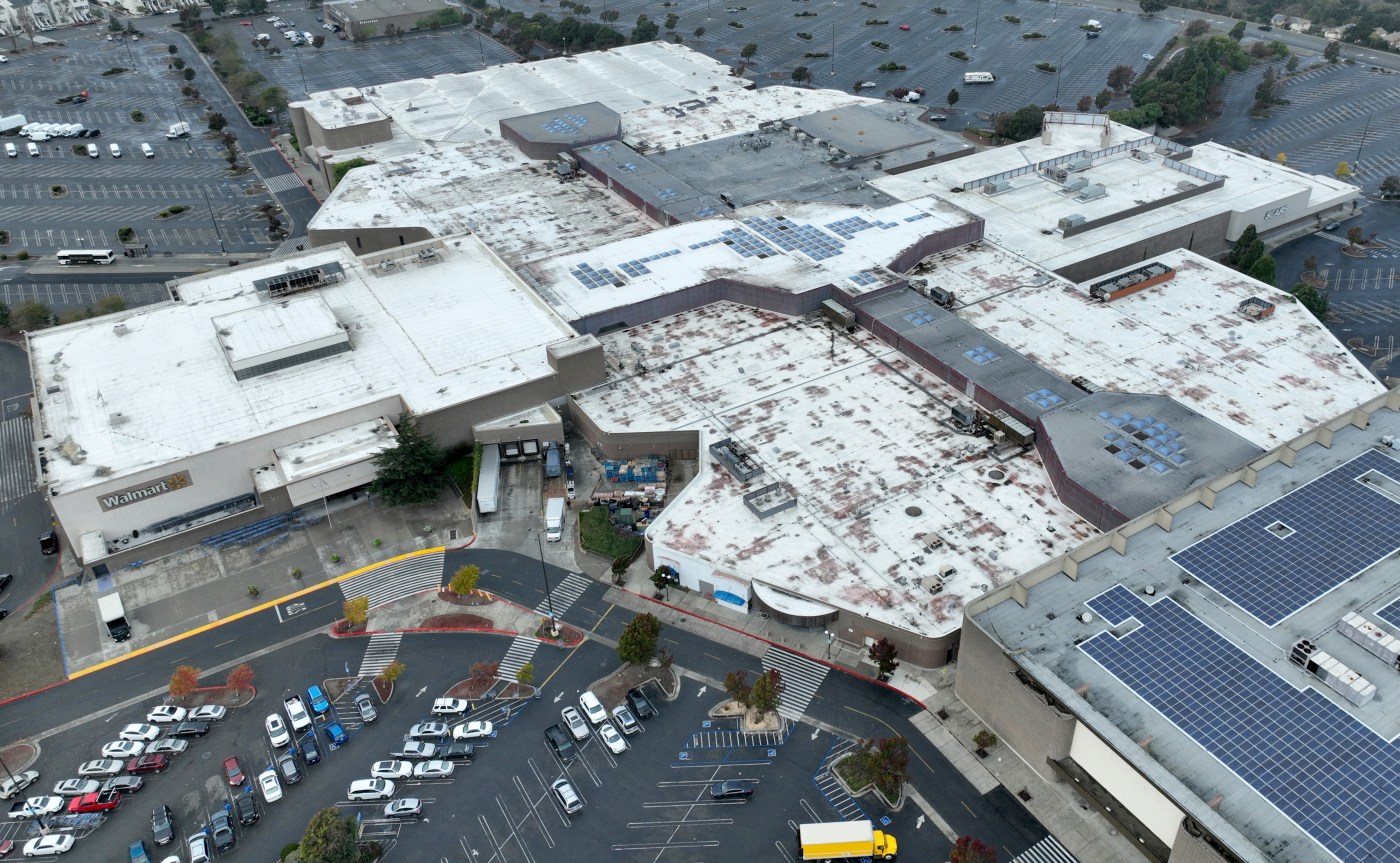
RICHMOND — Major redevelopment is coming for a large portion of Richmond land, which includes the former Hilltop Mall, but some segments of the community are split on how much housing should be incorporated into plans.
For about three years, the city has been crafting its Hilltop Horizon Specific Plan, a regulatory planning document meant to guide the development of a 143-acre northern section of the city.
Related Articles
New 242-unit housing development makes its way to Sunnyvale
New California neighborhood is the first fire-resistant community in the U.S.
Los Gatos Planning Commission OKs housing development despite traffic concerns
Bay Area developer helps Valero assess vast Benicia refinery’s future
Combo of homes, offices, shops proposed near downtown San Jose
The current vision, presented during an advisory meeting Wednesday by the city and consultant Environmental Science Associates, calls for building out the site with medium-density housing on the edges and then high-density housing and commercial spaces in the center.
“Hilltop Horizon will be a vibrant mixed-use community that blends innovation, commerce and culture, incorporating sustainable design, diverse housing and green infrastructure,” said Richmond Senior Planner Michele Morris during the morning meeting. “The plan redefines it as a dynamic and welcoming place for all.”
Four different zones are proposed. The mid-density zone would be all housing featuring buildings up to 35-feet tall with 15 to 40 units per acre. Those zones are meant to act as a transitional buffer between existing neighborhoods on the west and east sides of the lot.
The second transitional zone would be primarily residential with some light commercial uses allowed. Buildings would be about 50- to 70-feet tall at 30 to 80 units per acre. A third high-density intensity zone would focus more on commercial and employment uses with some high-density residential also allowed. Buildings would be 50- to 90-feet tall with 50 to 125 units per acre.
The final “Gateway” zone would act as the core hub of the plan with housing, commercial, retail and entertainment uses all envisioned. Buildings are proposed to be 70- to 135-feet tall and density at 80 to 200 units per acre.
Open space, walking and biking paths, gardens, paseos, public art and parks are also key elements incorporated into the vision, along with a transit hub and improved forms of mobility.
“This is still very much high-level. What this does is create that framework for us to work on more detailed design as we get further along in that process,” said Bev Choi, Environmental Science Associates’ Northern California Community Planning program manager.
Community feedback during Wednesday’s advisory meeting was mixed.
Two neighborhood leaders opposed to the proposal are Bhavin Khatri, president of the Hilltop District Neighborhood Council, and Arto Rinteela, chair of the Fairmede-Hilltop Neighborhood Council.
Both noted the city’s vision calls for far more housing than some surrounding residents would like to see built. If built out, Rinteela said the city’s plans would cause quality-of-life issues for existing residents.
Khatri shared doubt that the city’s plan would even get built within the next 50 years. Instead, they said they’d like to see lighter housing density proposed with more of a focus on retail and commercial growth.
“The density you’re showing here is disrespectful to the community,” Rinteela said. “You don’t have to live here, so you don’t have to deal with the quality-of-life issues.”
Prologis, the owner of the Hilltop Mall property, agreed, said company representative Cyrus Sanandaji.
Sanandaji implored staff to consider a lighter density vision that Prologis could feasibly meet, asserting current plans are out of step with the community’s wishes and are unrealistic of what could actually be built.
Alternatively, Rauly Butler, a former banker involved in the sale of the Hilltop Mall and current executive director of business advocacy group West Contra Costa Council of Industries, said the revisioning created a great opportunity for the city.
As a current board member of a nonprofit affordable housing agency, Butler said greater housing density is a key element that often enables a project to “pencil out” in California’s expensive development landscape.
And unlike Rinteela and Khatri, other nearby residents said they actually supported the city’s vision.
Coire Reilly, a program manager with the West Contra Costa Transportation Commission who lives in the area, called the plan “encouraging” and noted staff’s zoning ideas are actually below the density called for in the city’s general plan adopted 15 years ago.
“I want to see something cool in my neighborhood. I want to see something that’s a regional draw, something the city can be proud of,” Reilly said. “This site is a once-in-a-generation type of development. Wasting it with lower densities would be a great loss for the city and for the region.”
Morris and Choi noted the revisioning process still has a long way to go. They said they welcome all forms of feedback and plan to present their ideas and facilitate feedback during upcoming planning commission and city council meetings in May and June. A technical analysis is slated to begin later this year with the specific plan expected to be adopted by 2026, according to the project timeline.